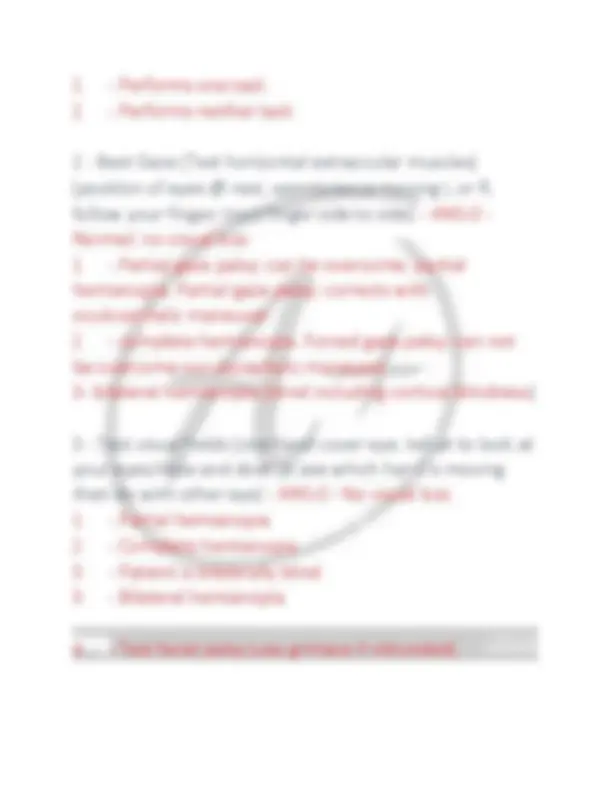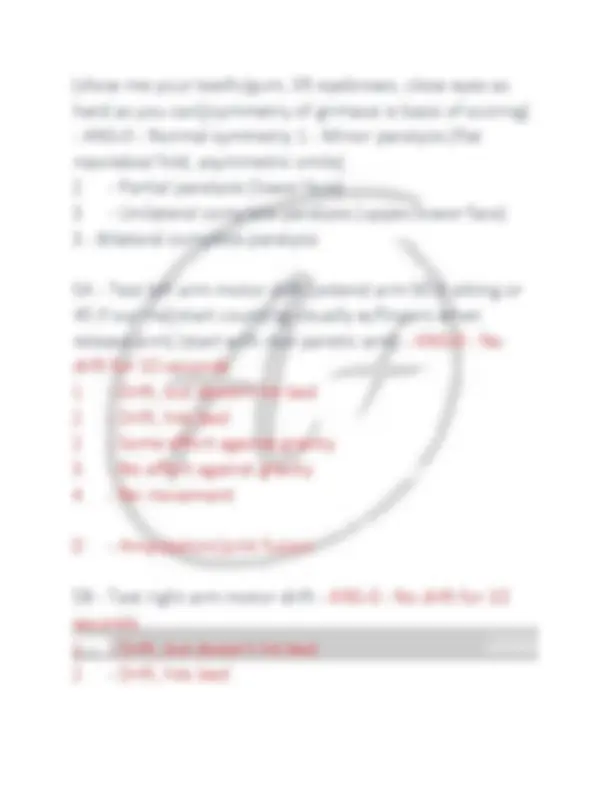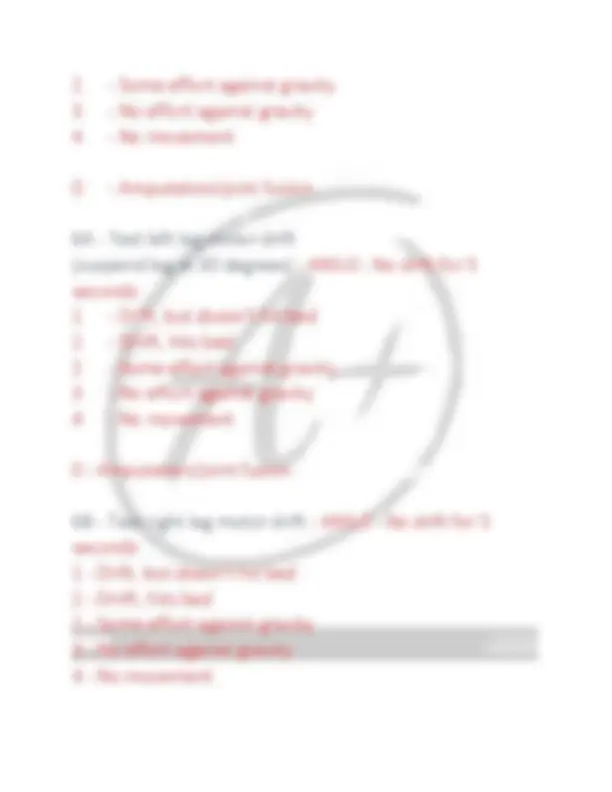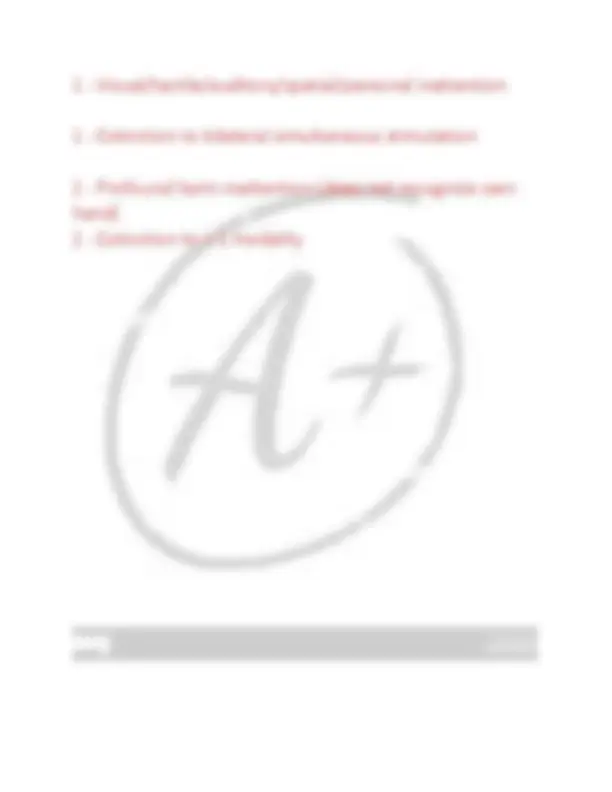






Study with the several resources on Docsity

Earn points by helping other students or get them with a premium plan


Prepare for your exams
Study with the several resources on Docsity

Earn points to download
Earn points by helping other students or get them with a premium plan
Community
Ask the community for help and clear up your study doubts
Discover the best universities in your country according to Docsity users
Free resources
Download our free guides on studying techniques, anxiety management strategies, and thesis advice from Docsity tutors
NIH Stroke Scale 2024-2025 Questions And Answers Graded A+
Typology: Exams
1 / 8

This page cannot be seen from the preview
Don't miss anything!





NIH Stroke Scale 2024 - 2025 Questions And Answers Graded A+ What NIHSS measures - ANS-measures severity of symptoms of stroke NIHSS areas of assessment - ANS-Level of consciousness Vision Extraoccular movements Facial Palsy Limb strength Ataxia Sensation Speech and language Grading scale of NIHSS - ANS-3 or 4 point scale Scores range from 0- 42 Score of >25 - ANS-Very severe stroke on NIHSS scale Score of 15- 24 - ANS-Severe stroke on NIHSS scale
Score of 5- 14 - ANS-Mild to Moderately Severe stroke on NIHSS scale Score of 1- 5 - ANS-Mild stroke on NIHSS scale 1A - Level of consciousness (stimulate, rub, pinch) - ANS- 0
(show me your teeth/gum, lift eyebrows, close eyes as hard as you can)(symmetry of grimace is basis of scoring)
2 - Some effort against gravity 3 - No effort against gravity 4 - No movement 0 - Amputation/joint fusion 6A - Test left leg motor drift (suspend leg at 30 degrees) - ANS- 0 - No drift for 5 seconds 1 - Drift, but doesn't hit bed 2 - Driift, hits bed 2 - Some effort against gravity 3 - No effort against gravity 4 - No movement 0 - Amputation/joint fusion 6B - Test right leg motor drift - ANS- 0 - No drift for 5 seconds 1 - Drift, but doesn't hit bed 2 - Driift, hits bed 2 - Some effort against gravity 3 - No effort against gravity 4 - No movement
1 - Mild-moderate aphasia: some obvious changes without significant limitation 2 - Severe aphasia: fragmentary expression, interference needed, cannot identify materials 3 - Mute/global aphasia: no usable speech/auditory comprehension 3 - Coma, unresponsive 10 Test dysarthria (read words: Mama, Tip-top, Fifty-fifty, Thanks, Huckleberry, Baseball player) - ANS- 0 - Normal; no dysarthria 1 - Mild-moderate dysarthria: slurring but can be understood 2 - Severe dysarthria: unintelligible slurring or out of proportion to dysphasia 3 - Mute/anarthric 0 - Intubated/unable to test 11 - Test extinction/inattention (presence of neglect of sensation on L or R or both, ask pt to close eye, ask pt which side is being touch. Wiggle finger on either side of patient R or L or both) - ANS- 0 - No abnormality
1 - Visual/tactile/auditory/spatial/personal inattention 1 - Extinction to bilateral simultaneous stimulation 2 - Profound hemi-inattention (does not recognize own hand) 2 - Extinction to > 1 modality